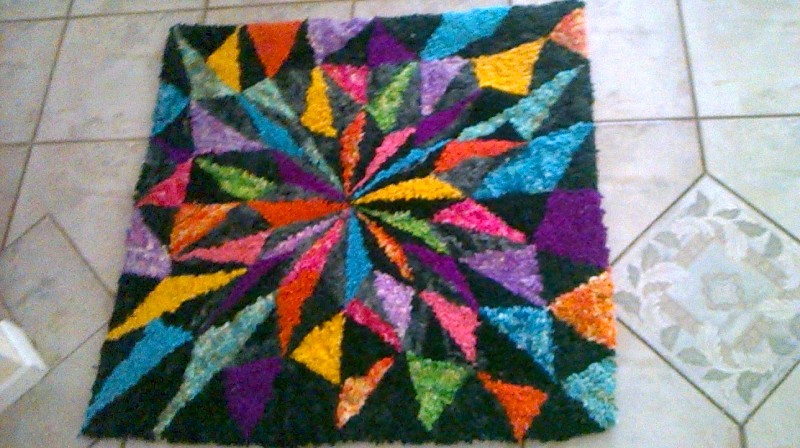ISSN 2007-001X 12th September, 2017
With promotion of “Re-imagined” a Challenge with a Difference underway, it seems appropriate to bring up that controversial subject “copyright” vs “inspiration”.
Much has been written on craft Blogs about this often misunderstood subject.
Recently two good references were posted on the Australian Rugmakers Guild Facebook page
 “Owning It” written by Sharon Givoni, an Australian Intellectual Property Lawyer, see a review by Lynda Worthington of Artwear Publications.
“Owning It” written by Sharon Givoni, an Australian Intellectual Property Lawyer, see a review by Lynda Worthington of Artwear Publications.
The other is a Flow Chart published in the USA, Springfield, Missouri, by Ginger Davis Allman of The Blue bottle Tree (Polymer Clay Tutorials & Info) along with an interesting article by Ginger on this subject and about her lessons learned. While Ginger is talking polymer clay, I think the information applies equally to textiles and rugmaking.
Ginger’s flow chart designed for the hobbyists and crafts-person is very easy to follow and may be copied for personal use providing the author is acknowledged, and includes the copyright information on the form.
Rug maker Kris Miller (Spruce Ridge Studios, USA) has written several Blogs on this subject. Here is the most recent Blog which covers Copyright from a rugmakers point of view.
To summarize – and remember I am not a lawyer or an expert on copyright – just someone interested who has read many articles on this subject.
Generally speaking, anything created prior to 1923 is in the public domain and can be used as inspiration (copied) as long as the artist (if known) and where the work was seen, is acknowledged.
After 1923 – it’s best to assume all works are copyrighted, which covers the life of the artist + 70 years and no amount of change (many different percentages are bandied about) allows any work to be copied without the written permission of the artist.
A work would have to be changed so much that it was unrecognizable – if that’s the case why not create your own design to begin with.
With regard to what can or cannot be copyrighted, it should be noted some subjects, such as animals and landscapes and traditional craft techniques and ideas, cannot be copyrighted. However, an animal shown in a certain way or as a design on a logo or brand of a corporation can be copyrighted.
If you feel you’re unable to come up with an idea without some form of ‘reference’ ….. use your own photographs, but be sure and document the place and time and any details of your photographs so your can trace back to you own inspirational image should your work finish up resembling that of another artist.
Problems arise because many people think; if they’re creating a work of art for their own enjoyment with no intention of using it commercially or to show, then it’s OK to copy and just acknowledge the artist.
Unfortunately this doesn’t work – even if you don’t share on Facebook, or Pinterest or various online newsletters and Blogs, one of your friends might, and before you know it – you’ve gone VERY public indeed.
A recent example of this was a guild member who used an image from a quilt design for her rug. Since it was purely for her own use she thought all she had to do was acknowledge the artist. She submitted two rug images for inclusion in the Guild newsletter and was advised that for the copied piece to be published she would need written permission from the artist. She applied and her application was rejected. The other image she’d submitted, a rug of her own design, which she didn’t think was very good, was shown on the Guild Facebook page. Having seen both images, I think her own piece (shown below) was equally effective in both colour and design as the copied design.
The bottom line here is either purchase a commercial pattern, or come up with your own design without copying another artists work.
Remember, simple ideas i.e. geometrics, can be very effective.
You really don’t know what you can do until you try!
Trying to create something different, is the basis of the current Challenge and why the Call for Entries has such strict instructions as to the use of so many unusual embellishments.
Don’t let your Challenge entry be rejected because you’ve copied the work of another artist.
This is the reason we want members to understand the difference between “inspiration” and “copying”
and
we’re looking forward to many entries being submitted.
Jo Franco, Editor & Judi Tompkins, Communications Chair

